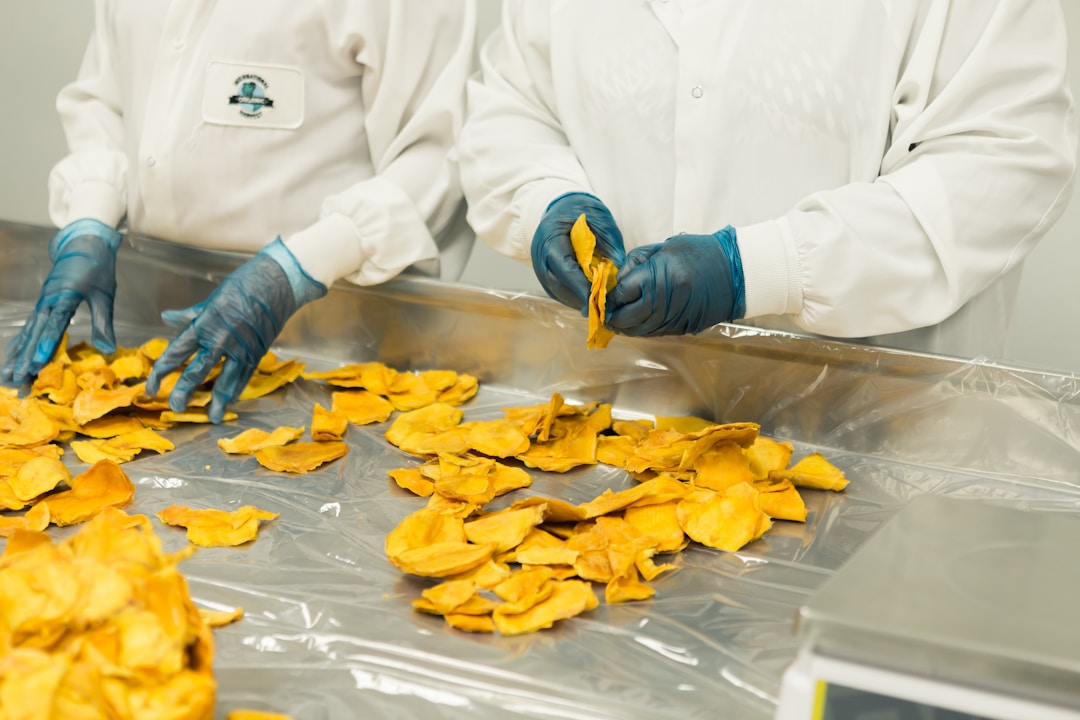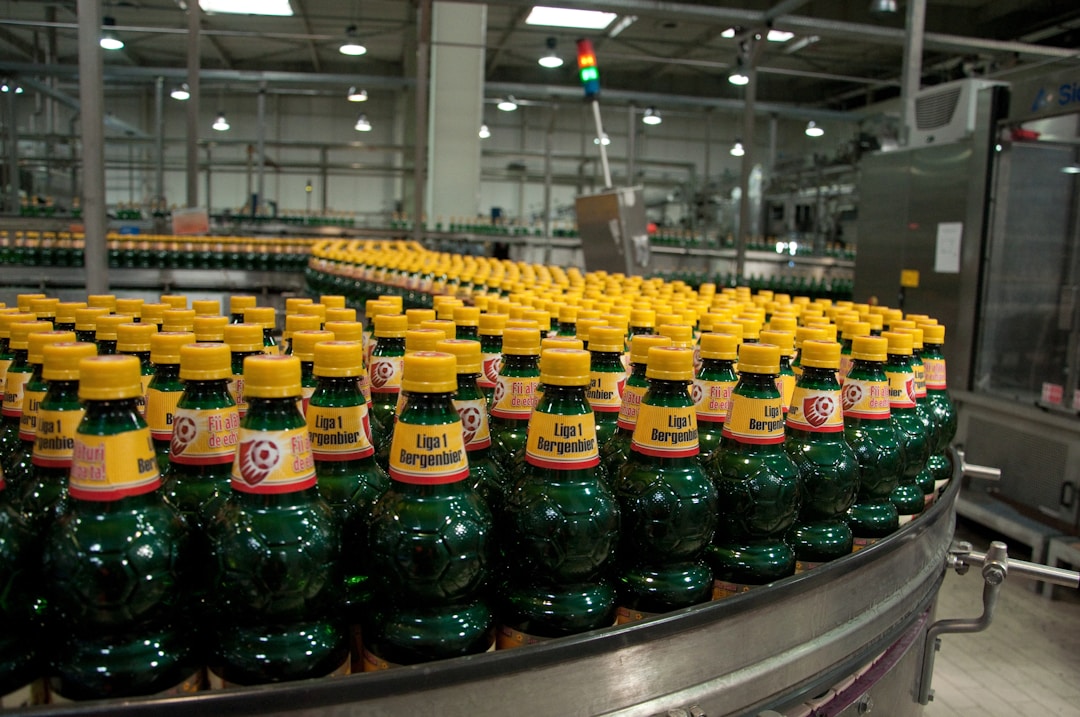The food manufacturing industry is faced with an array of challenges from managing the intricacies of production, supply chains, and quality control to maneuvering the labyrinth of regulations and standards. Not to mention, the sector is also replete with a relentless endeavor to cut costs without compromising quality and efficiency. This article aims to furnish food manufacturers with a buffet of cost-saving strategies that will not only bolster profitability but also fuel sustainable growth.
Embrace Used Equipment
One primary avenue for cost reduction is the acquisition and use of second-hand machinery. It’s a common misconception that used equipment equates to compromised quality or diminished productivity. However, well-maintained pre-owned machinery, such as a used rotary screw compressor, can serve a food manufacturing plant with the same level of efficiency as a brand-new compressor. A used rotary screw compressor, for instance, is not only cost-effective but also provides reliable, continuous operation ideal for food processing applications. When acquired from a reputable vendor, used machinery can drastically reduce the initial investment, enabling the allocation of resources to other vital aspects of the business.
Invest in Regular Maintenance
Although it may seem like an additional expense, regular maintenance is a preemptive measure that can save food manufacturers from costly repairs or replacements in the long run. Neglecting to maintain industrial equipment could lead to unexpected breakdowns, causing significant disruption to production and, consequently, customer dissatisfaction. Hence, a well-structured maintenance schedule that involves routine checks, part replacements, and deep cleaning can help extend the lifespan of your machinery and ensure smooth operation. Investing in training for staff to understand and adhere to maintenance schedules is equally essential.
Optimizing Energy Consumption
Food manufacturing processes are inherently energy-intensive, and therefore, the careful management of energy consumption is crucial for cost optimization. Implementing energy-efficient practices starts with monitoring the current usage, pinpointing areas of waste, and identifying opportunities for improvement.
For instance, machinery should be switched off when not in use, and preventive maintenance schedules should be strictly followed to ensure equipment is working optimally and not wasting energy. It’s also worth considering an energy audit to identify potential areas of energy wastage. Eco-friendly equipment and technologies, such as energy-efficient lighting and HVAC systems, can also contribute to significant energy savings over time. Furthermore, the adoption of renewable energy sources, like solar or wind, can bring long-term benefits both from a financial and environmental perspective.
Homogenization: A Cost-Effective Approach

The homogenization process brings a multitude of advantages to food manufacturing, which can contribute significantly to cost savings. The primary purpose of homogenization is to create a stable, uniform mixture of substances that naturally want to separate. In the food industry, homogenizer advantages include extended shelf life, better stability, improved texture, and enhanced flavor of products.
Homogenizers can also allow manufacturers to use less of certain ingredients, such as stabilizers and preservatives, without sacrificing product quality. They can create emulsions using less oil and ensure the uniform distribution of smaller quantities of high-value ingredients, like flavorings or active ingredients, throughout a product. Consequently, this can lead to cost savings in raw materials, which can be a significant part of the overall production cost.
Lean Manufacturing and Waste Reduction
Waste reduction is another important element of cost-saving. Adopting a lean manufacturing approach can help identify and eliminate waste, streamline processes, and improve productivity. The lean philosophy focuses on creating value for the end customer and eliminating activities that do not contribute to this value. Waste can be in the form of unnecessary movement of people, overproduction, idle time, and suboptimal use of resources.
In addition to this, food manufacturers should consider waste management strategies to handle waste in a cost-effective and environmentally friendly manner. This could involve recycling waste where possible, selling waste to other industries for reuse, or investing in technologies that turn waste into energy.
Training and Development
Investing in the training and development of your workforce is another essential strategy for cost savings. A well-trained staff is more likely to operate equipment efficiently, maintain quality standards, and increase productivity, which all contribute to cost savings. In addition, when employees feel valued and are given opportunities to develop and grow, they’re likely to be more engaged, motivated, and productive, reducing the costs associated with high turnover rates and low morale.
Streamline Inventory and Warehouse Management
Efficient inventory and warehouse management are integral to cost-saving initiatives for food manufacturers. Holding excessive inventory can lead to excessive storage fees, increased risk of spoilage, and higher insurance premiums. Conversely, insufficient stock on hand can result in production delays or lost sales due to stockouts.
Food manufacturers can implement inventory optimization strategies, such as just-in-time (JIT) purchasing and effective demand forecasting, to strike a balance between carrying too much or too little inventory. This can minimize the costs associated with inventory handling, warehousing, and spoilage of perishable goods.
Furthermore, investing in warehouse management systems and technologies can improve efficiency within the warehouse. Barcode scanners, automated conveyor systems, and warehouse management software can expedite processes, reduce the risk of errors, and ultimately lower operational costs.
Implement Preventative Maintenance Programs
Regular maintenance of machinery and equipment is essential for minimizing unexpected breakdowns, reducing downtime, and avoiding costly repairs or replacements. Food manufacturers should establish a comprehensive preventative maintenance program that includes routine inspections, cleaning, and tuning of machines to ensure they operate at peak efficiency.
Food manufacturers should also invest in tools and systems that help monitor the overall health of their equipment, such as sensors and predictive maintenance software. These can identify early warning signs of equipment failure, allowing you to address issues before they escalate into major problems.
Properly maintained equipment not only reduces the risk of costly downtime and repairs but also extends the life expectancy of your machinery, ensuring a higher return on investment and keeping your production running smoothly and efficiently.
Improve Packaging Solutions

The right packaging solutions can help food manufacturers save money both on materials and shipping costs. By exploring alternative materials and optimizing package designs, manufacturers can significantly reduce their expenses.
For example, consider switching to lightweight, cost-effective materials that offer similar durability and protection qualities or redesigning food and drink packages to reduce materials needed while maintaining structural integrity. Food manufacturers can also invest in machinery that increases automation levels, leading to increased efficiency and reduced labor costs.
It’s also important to optimize the pallet configurations and product stacking to minimize the space needed for storage and transport. Improved solutions can not only cut costs but also create a more sustainable brand image, helping you market your products to environmentally conscious consumers.
Explore Automation Opportunities
Automating certain aspects of the production process can lead to substantial cost savings and increased efficiency. By investing in automation technologies, food manufacturers can reduce labor costs, increase production speeds, and improve product consistency and quality.
Consider conducting a thorough assessment of your production process to identify areas where automation can be implemented, such as material handling and quality control. As technology continues to advance, the affordability and accessibility of automation solutions for food manufacturers become even more appealing.
Sustainability Is Key
To wrap it all up, cost reduction in food manufacturing isn’t about cutting corners or compromising on quality. Rather, it’s about being resourceful and innovative, seeking efficiencies at every stage of the production process. From opting for used equipment and investing in regular maintenance to adopting lean manufacturing and investing in workforce development—each strategy outlined in this article plays a vital role in not only saving costs but also promoting sustainable business practices. In the end, sustainable cost-saving measures can enhance profitability, maintain competitiveness, and ensure the longevity of the business in an ever-evolving marketplace.
Featured Image by PublicDomainPictures from Pixabay





